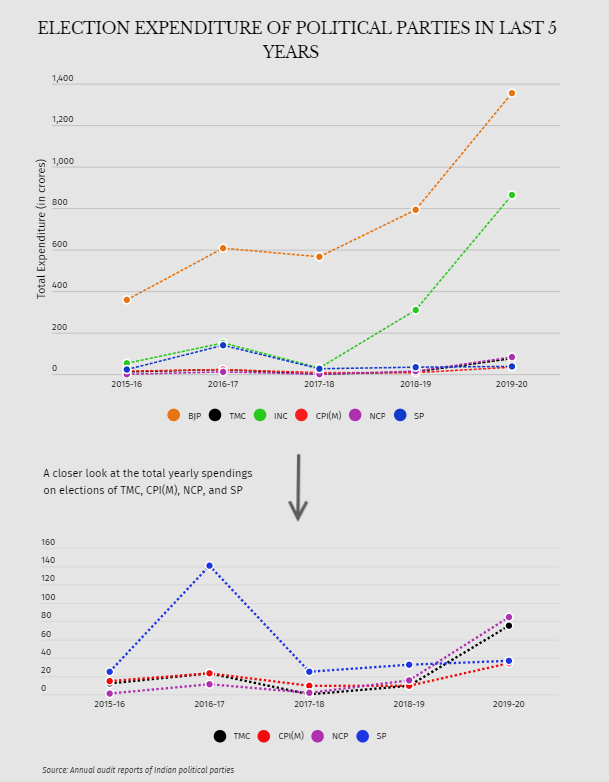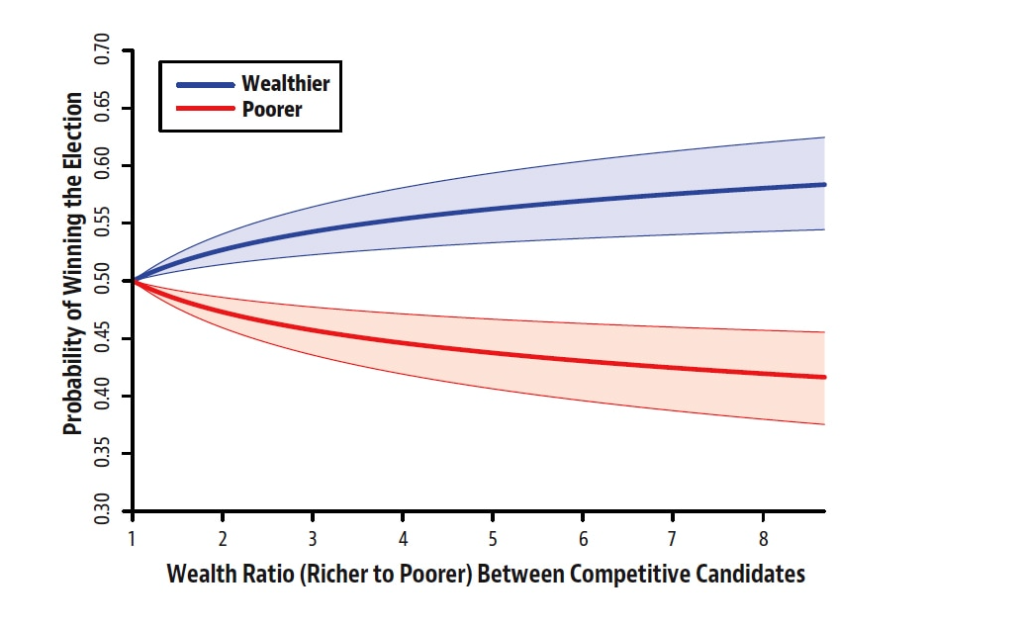Economics and Elections
- Debadarshi Mishra
- Apr 7, 2024
- 2 min read
Elections are the cornerstone of democracy, but the fight for votes comes at a cost. Behind the rallies and debates lies a complex economic ecosystem that fuels election campaigns. Now that the election frenzy begins in the second week of April let’s dive further into the cash flow of campaigning.
What do the stats say?
In the Indian elections scene, more than Rs 6,500 crore or Rs 65.641 billion was spent on elections by 18 political parties, including seven national parties and 11 regional parties, between 2015 and 2020, an analysis of the annual audit reports of the political parties submitted to the Election Commission of India. The political parties spent over Rs 34 billion or 52.3% on publicity alone.

There has been an increase in the number of affluent candidates. Based on self-reported candidate affidavits submitted for Lok Sabha elections from 2004 to 2014, the median total wealth of candidates increased by almost 330% nominally. The absolute increase in the median wealth of candidates was 116%, even after accounting for inflation. India's nominal per capita income in 2014–2015 was Rs 88,533, almost 27 times the wealthiest amount that candidates in the 2014 national election reported having. This means that they are substantially more affluent than the overall population.
Most crucially, if campaigns must be self-financed, candidates would see running for office as an investment rather than a one-time expense. This could result in increased levels of government corruption as lawmakers attempt to recover the costs of running for office. Judging from pertinent information, politicians in office appear to get a good return on their assets.
The wealthier a candidate is, the smoother the victory.
The following graph can explain the line above:

The candidate with more assets has a more substantial chance of winning when the difference in wealth between the top two candidates in a district widens. The wealthier candidate has a roughly 10% higher chance of winning than the poorer candidate in the median scenario.
What happens to the economy?
We can be assured that elections imply the involvement of many small-scale vendors & businesses. They’re the driving force behind the campaigning process, and politicians greatly take advantage of this information.
Something as simple as printing flyers translated to a boost in business for local vendors & rallies uplift the hospitality sector. However minor this may seem for the economy in general, it’s still a rise.
But, this is slightly flawed.
High costs usually create an uneven playing field, and candidates with more incredible wealth (further backed by wealthy donors) win with an effortless edge in all directions. This further leads to policies being made by people with more significant financial clout & not whom the people wish to see. Skewed policies, in turn, affect the same vendors who have worked hard for these candidates before.
-Debadarshi Mishra



Comments